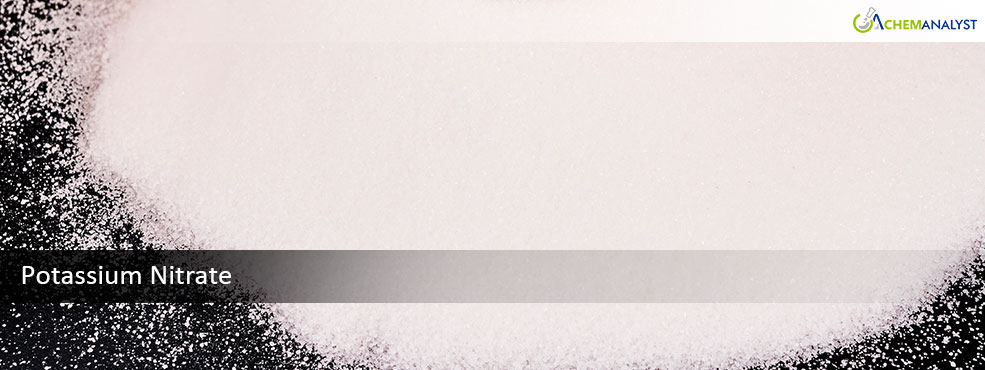Welcome To ChemAnalyst

The fertilizer market saw notable price fluctuations, particularly for Potassium Nitrate, influenced by trends in potash market in December 2024. Potassium Nitrate prices in Jordan declined due to a stable supply chain, efficient production, and lower raw material costs. Despite a seasonal slowdown in agricultural activity, which generally lowers demand, the market remained steady. Weaker farming activity during the off-season reduced fertilizer demand, especially for Potassium Nitrate, as less intensive cultivation led to fewer purchases from farmers.
In China, fertilizer demand for Potassium Nitrate was subdued due to off-season conditions and limited affordability in key markets. While production levels increased, especially in nitrogenous fertilizers, the demand for processed fertilizers like Potassium Nitrate remained weak. The reduction in demand was compounded by government export restrictions, which added pressure to local prices. With the global fertilizer market facing supply chain challenges, including fluctuating potash prices, Potassium Nitrate's price trends were similarly affected.
The global potash market showed mixed trends, which had a direct impact on Potassium Nitrate prices. In Southeast Asia, potash prices fell as fertilizer demand weakened, largely due to a decline in palm oil prices, which reduced fertilizer use for oil palm plantations. This decrease in potash demand exerted downward pressure on Potassium Nitrate prices, as both fertilizers are critical for crop development. In contrast, Brazil saw rising potash prices due to supply pressures, but overall market sentiment remained cautious. The reduced demand from Southeast Asia and slower agricultural activity added to the broader pressure on fertilizer prices, including Potassium Nitrate.
Russia continued to play a central role in the global fertilizer market, with a 25% increase in its fertilizer exports over the past three years. It is now the world's largest fertilizer exporter, supplying a quarter of global imports. Russian exports, especially nitrogenous fertilizers, remained strong despite geopolitical challenges, which had a ripple effect on other fertilizer markets, including Potassium Nitrate. European markets, particularly Spain, showed increased reliance on Russian fertilizers, reflecting a shift in trade dynamics. This growing dependence on Russian fertilizers influenced Potassium Nitrate prices, as changes in supply chains and pricing trends impacted the broader market.
In Jordan, industrial output growth slowed to 1.2% in October 2024, partly due to weaker manufacturing performance in the fertilizer sector. Fertilizer demand remained stable, driven by agriculture, although global economic conditions and seasonal variations affected purchasing patterns. Potassium Nitrate demand faced pressure from weaker agricultural activity but remained steady in sectors such as food preservation and fireworks manufacturing.
Looking ahead, the global fertilizer market, including Potassium Nitrate and potash, is expected to stabilize in 2025. Producers and distributors are adjusting inventories, and a potential recovery in agricultural demand could help balance supply and demand. However, the fertilizer market remains sensitive to geopolitical factors and fluctuations in natural gas prices, which influence production costs. Price recovery is expected in key segments like Potassium Nitrate and potash as the market adjusts to ongoing dynamics.
We use cookies to deliver the best possible experience on our website. To learn more, visit our Privacy Policy. By continuing to use this site or by closing this box, you consent to our use of cookies. More info.
